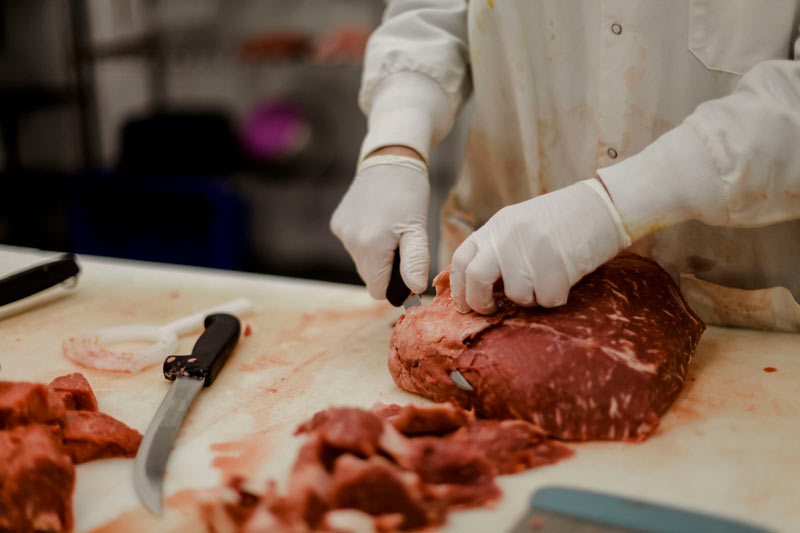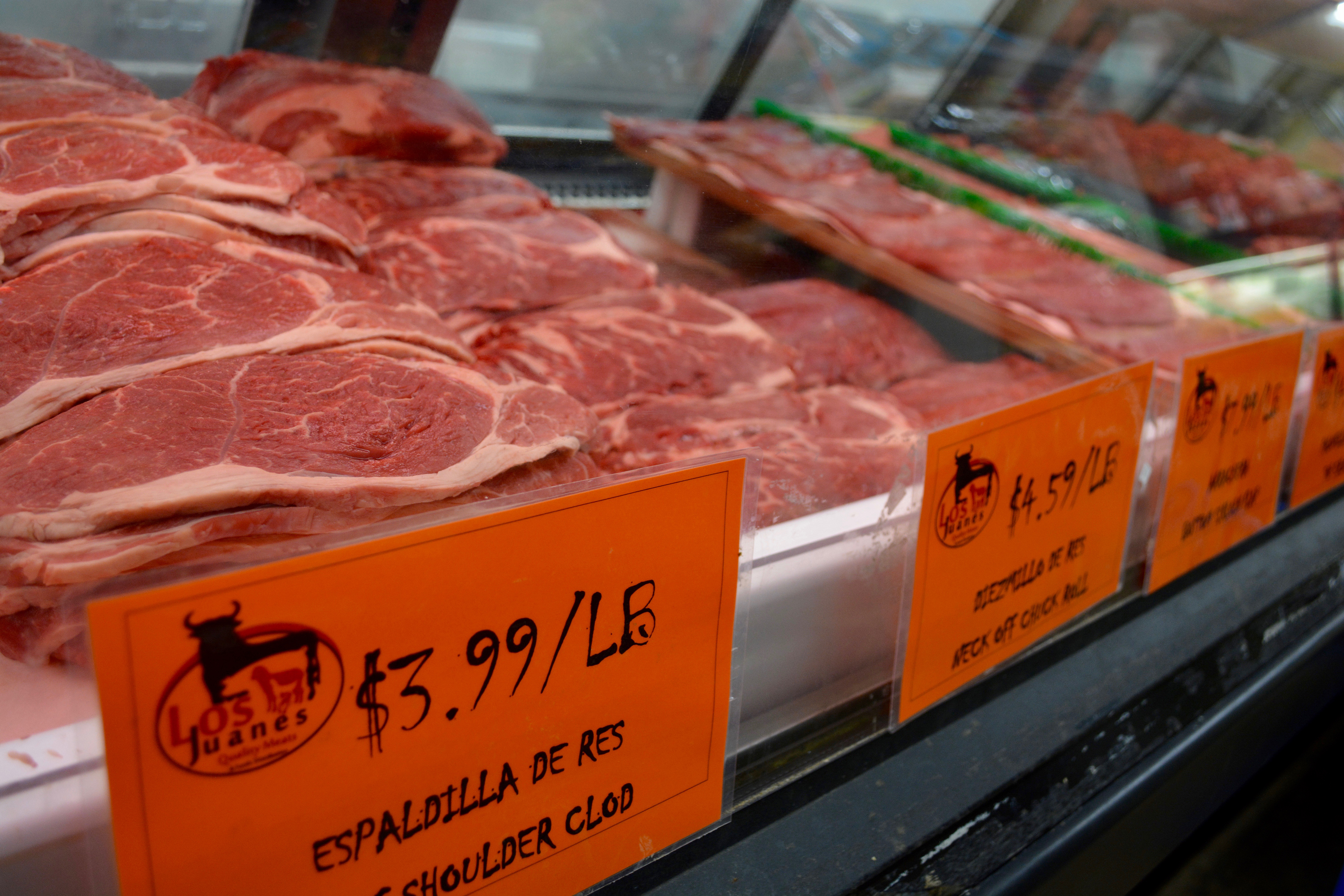Discover the Art of the Butcher's Cut in a Modern Meat Market
In the ever-evolving landscape of contemporary meat markets, the butcher's cut has transcended its traditional roots, combining old-time craftsmanship with contemporary practices. Today's butchers are not just cpus of meat; they are experienced artisans who emphasize sustainability and ethical sourcing. Their proficiency in selecting and preparing cuts customized to certain culinary needs supplies an unparalleled eating experience. Yet, what genuinely sets the modern butcher apart is their capacity to create a deeper link between customers and the origins of their meat. How do these masters equilibrium tradition with innovation, and what effects does this have for the future of meat consumption?
Evolution of Butchery Strategies
The evolution of butchery strategies reflects a rich tapestry of technology and adaptation driven by innovations in innovation, adjustments in consumer need, and a much deeper understanding of meat science. Historically, butchery was a craft passed down via generations, with methods refined over centuries to take full advantage of return and flavor. The industrial transformation ushered in automation, transforming conventional methods and making it possible for large-scale processing.
The mid-20th century saw butchery methods additionally improved by clinical insights into muscle mass biology and meat aging, improving both inflammation and preference. Technologies like vacuum cleaner packaging and refrigeration extended product shelf-life, enabling butchers to branch out offerings and boost quality assurance. This period also marked the rise of specialized devices, such as band saws and meat slicers, which boosted accuracy and performance in meat handling.

Electronic systems now assist in monitoring animal provenance and maximizing cuts to satisfy particular customer choices. Additionally, a resurgence in artisanal butchery has actually emerged, blending traditional skills with contemporary knowledge to cater to customers looking for ethical and sustainable meat options.
Recognizing Meat Cuts
Recognizing the ins and outs of meat cuts is vital for both butchers and consumers seeking top quality and value. Each cut originates from a different component of the animal, presenting distinct tastes, textures, and food preparation methods - bagley farms meat market edwardsville il. Proficiency of these differences not only boosts culinary experiences however also maximizes the energy of each carcass. For butchers, precise cuts show ability and respect for the craft, guaranteeing marginal waste and optimal return.

Comprehending muscle composition is critical; muscular tissues utilized more regularly by the pet tend to be harder and are best fit for slow food preparation techniques, while less-used muscles, like those located in the loin, are much more tender and ideal for cooking or roasting. Experience with these distinctions encourages consumers to make informed options, improving their culinary ventures.
Selecting Top Quality Meat
Picking the appropriate meat involves more than just selecting a visually appealing piece from the display screen. The art of selecting top quality meat requires a critical eye and knowledge of details features that indicate quality and excellence.
Secondly, think about the marbling, which refers to the white flecks of fat within the muscular tissue. Proper marbling is a crucial indication of inflammation and taste, as it melts throughout food preparation, boosting the meat's juiciness. Keep in mind, greater marbling often associates with exceptional quality cuts, such as USDA Prime.
Structure is one more critical factor; meat ought to feel firm to the touch, not slimy or overly soft. In addition, bear in mind the fragrance. Fresh meat must have a clean, neutral odor, without any type of sour or repulsive smells.
Combining Cuts With Food Preparation Methods

On the other hand, harder cuts like brisket and chuck roast are abundant in collagen, which breaks down into gelatin when prepared gradually. These cuts are perfect for braising or slow-moving roasting, allowing the meat to tenderize in time and establish deep, complicated flavors. Cuts such as brief ribs and pork shoulder make out well with slow-cooking approaches, where expanded cooking times change their durable appearances right into delicious dishes.
Lamb shanks and oxtail, which call for long term cooking to soften, are perfect prospects click reference for stewing or sluggish simmering. These techniques coax out abundant, passionate tastes while keeping moisture. By understanding the unique qualities of each cut, chefs and home cooks alike can elevate their cooking productions, making certain each meal is both satisfying and memorable.
The Butcher's Function Today
Browsing the advancing landscape of the modern meat market, the butcher's function today expands past simple preparation of cuts. Contemporary butchers are culinary artisans, educators, and advocates for lasting practices. They connect the gap in between the farm and the fork by guaranteeing honest sourcing, understanding animal husbandry, and focusing on transparency in the supply chain. This shift mirrors the growing customer need for top quality over quantity, where provenance and pet well-being are extremely important.
In addition to check my blog crafting accurate cuts, butchers now engage straight with consumers, using cooking recommendations and customizing choices to fit private needs and choices. Their know-how useful link in meat aging, marbling, and taste profiles encourages customers to make enlightened decisions, boosting their cooking experiences. This individualized service exhibits the butcher's evolving role as a relied on advisor in the cooking area.
Moreover, butchers are crucial in lessening waste, making use of entire pets to develop varied items such as sausages and stocks. This comprehensive approach not only values the pet yet additionally straightens with modern sustainability goals. This way, the contemporary butcher embodies both custom and technology, adjusting to an ever-changing market while preserving the virtuosity and honesty of their craft.
Conclusion
The modern butcher's craft delicately weaves conventional strategies with modern developments, emphasizing sustainable practices and ethical sourcing. Proficiency in understanding varied meat cuts and high quality indications empowers butchers to offer informed recommendations, aligning certain cuts with optimum cooking methods. This knowledge not only boosts cooking experiences but likewise strengthens the link between customers and the origins of their food. By honoring historical methods while welcoming contemporary demands, the butcher's duty remains important in today's advanced meat market (bagley farms meat market edwardsville il).
Comments on “What Makes Bagley Farms Meat Market Edwardsville IL Stick Out for Meat Lovers”